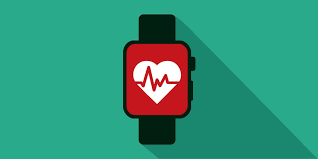It’s a common refrain in senior living that today’s assisted living communities are closer to yesterday’s skilled nursing facilities.
You are here
Wearables for health and wellbeing
 How do wearables contribute to health and wellbeing of older adults? Did something happen recently propelling sales up 51% that pushed consumers out the door to buy a wearable, like a fitness band or a smartwatch? Was it the coolness of the Apple Watch? Was it fear of ailments that worsen with lack of exercise? Or to put the question another way, what is it that these devices do that can help maintain or improve health, noting that 32% of baby boomers today get no exercise whatsoever, according to the CDC. However more than 50% are striving for 30 minutes per day and want feedback about how they're doing. Today’s wearables have functions that are relevant because they:
How do wearables contribute to health and wellbeing of older adults? Did something happen recently propelling sales up 51% that pushed consumers out the door to buy a wearable, like a fitness band or a smartwatch? Was it the coolness of the Apple Watch? Was it fear of ailments that worsen with lack of exercise? Or to put the question another way, what is it that these devices do that can help maintain or improve health, noting that 32% of baby boomers today get no exercise whatsoever, according to the CDC. However more than 50% are striving for 30 minutes per day and want feedback about how they're doing. Today’s wearables have functions that are relevant because they:
Measure your heart rate. Tracking heart rate is one of the most basic functions of wrist-worn wearables – and a basic element of tracking includes knowing the target (and maximum) heart rate ranges for your particular age group. The objective is to exercise to the point where your heart is beating at up to 85% of its capacity, which in the example chart would be 78-132 beats per minute for a 65-year-old with a max of 155 bpm. As note in the link, medications can impact heart rate, and for those starting out, lower end of the range is better.
Track your exercise. Are you walking, running, swimming or doing an exercise that devices can detect as motion -- and even count, as with steps? Whether you are doing the exercise to lose weight or become and stay fit, the combination of motion and measured heart rate can be compared against goals and even recommended fitness levels. The goals can be entered into a smartphone app, for example, on Apple Health or Samsung Health, and the Bluetooth-synchronized device coaching feature will buzz and/or display encouragement as you move and as goals are achieved.
Help you get help if you fall. Fall detection has been a feature of wearable Personal Emergency Response Pendants (or Medical Alerts) for the past decade. However, it is a relatively new feature of wrist-worn wearables like watches, but from a safety standpoint, may turn out to be one of the most useful in retirement, especially for people who live alone and/or take a dog for a walk alone. These devices have a built-in accelerometer and gyroscope which may be activated in a fall. Depending on whether the feature is available and also turned on, the device may place a call to emergency services.
Electrocardiogram (ECG). Checking for heart arrhythmia is an even newer feature of wearables, and is included in the Apple Watch Series 4 and likely in a future Samsung Galaxy Watch Active. For individuals who are worried about abnormal heart rhythms, or AFib, which mostly affects those age 65+, the device could be useful. Examples where it was helpful have already been noted.
Help you find where you’re going – and also be found. We have grown increasingly dependent on GPS Location-tracking as part of mapping and directions, trusting it sometimes over common sense. And GPS location can be enabled in newer wearables, like Samsung’s or Apple’s. They can also help with directions and your location even when away from a smartphone or the phone is turned off. But a GPS-enabled device can also be a lifesaver. When enabled and integrated with a service, for example, it enables responders to find your location and display that on a map. And if you lose the watch, its GPS location capability can enable the watch to be found with a Find my Phone feature.

Comments
From Bill Sirkin via LinkedIn
If they can save lives and provide emergency response then YES.
From Bill Geiser via LinkedIn
The ROI for wearables that help baby boomers stay in their home longer or minimize hospital stays can be quite compelling. And, if they promote improved fitness &/or wellness...even better!
Track your health With Biological Age
Your Biological Age (vs chronological age) is a great indicator of your health.
iHeart Internal Age (https://goiheart.com/), uses Aortic Stiffness, a proven indicator of overall health to tell you how young you are inside.
Gregor Rae via Linkedin
Very interesting. Also picked up on the recent, timely NPD report on rural broadband penetration in the USA featured in AIP Technology Watch... https://www.healthpopuli.com/2019/07/30/100-million-people-in-america-la...